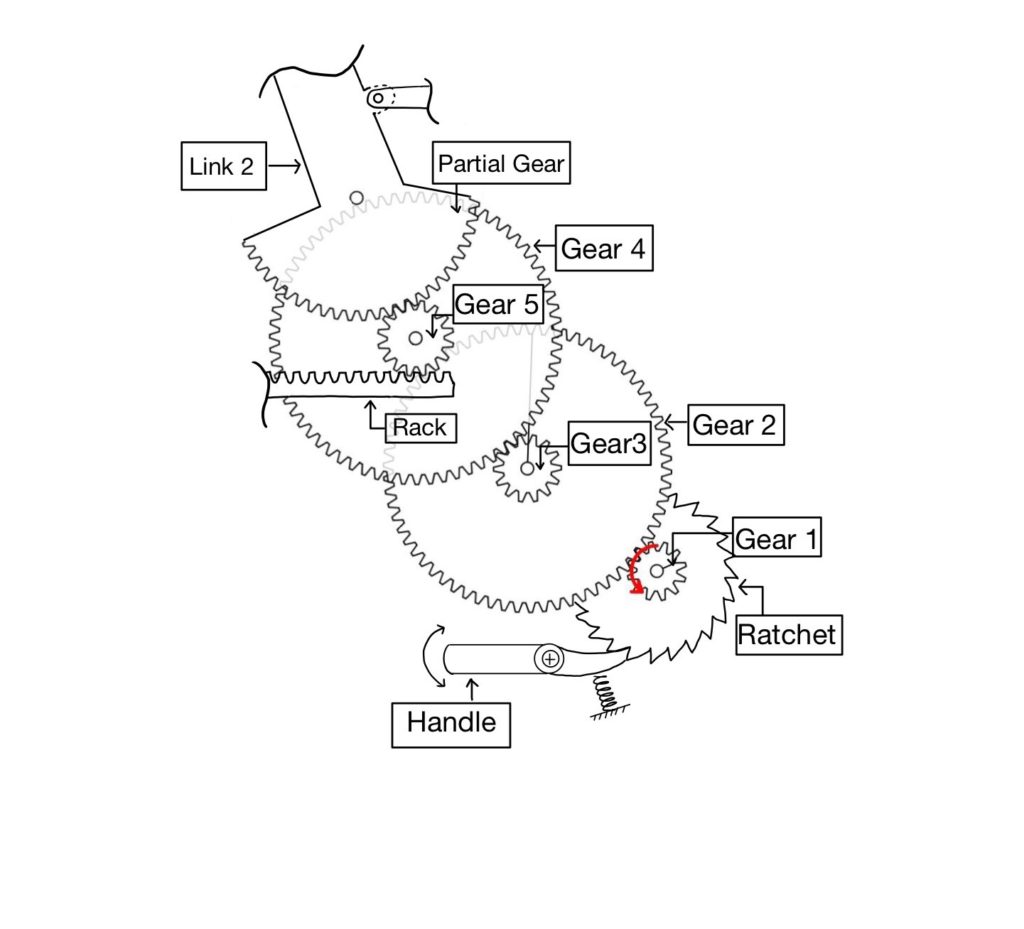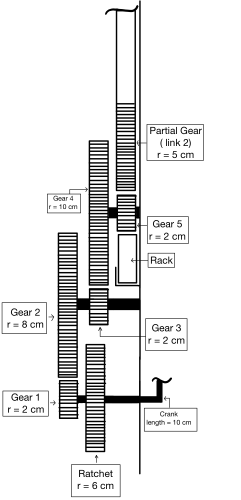After a successful race in the 2017 World Solar Challenge in their ninth-generation solar vehicle, our client, the Blue Sky Solar Racing team, was tasked with designing and building a new tenth-generation solar vehicle. The team reached out to me and my design team for assistance, and we agreed to help them as part of our third-year Kinematics design project.
They needed a new hinge mechanism that opens and closes the top (10kg roof) aero body from the main body. It had to intrude less space on the inside compared to the amount of space the existing mechanism intruded. Additionally, the new mechanism was to be driven by a driver-operated crankset to the desired roof angle.
Results – A new roof opening/closing mechanism was developed that utilizes four six-bar hinge mechanisms, a gear train, four dampers, a ratchet locking mechanism, and a crank that do not obstruct any of the internal vehicular components and reduce the amount of torque required to open the roof from 74 Nm down to 4 Nm (94% reduction). Additionally, the mechanism provided the driver the ability to open and close the roof whilst sitting in the driver’s seat.
Existing Design
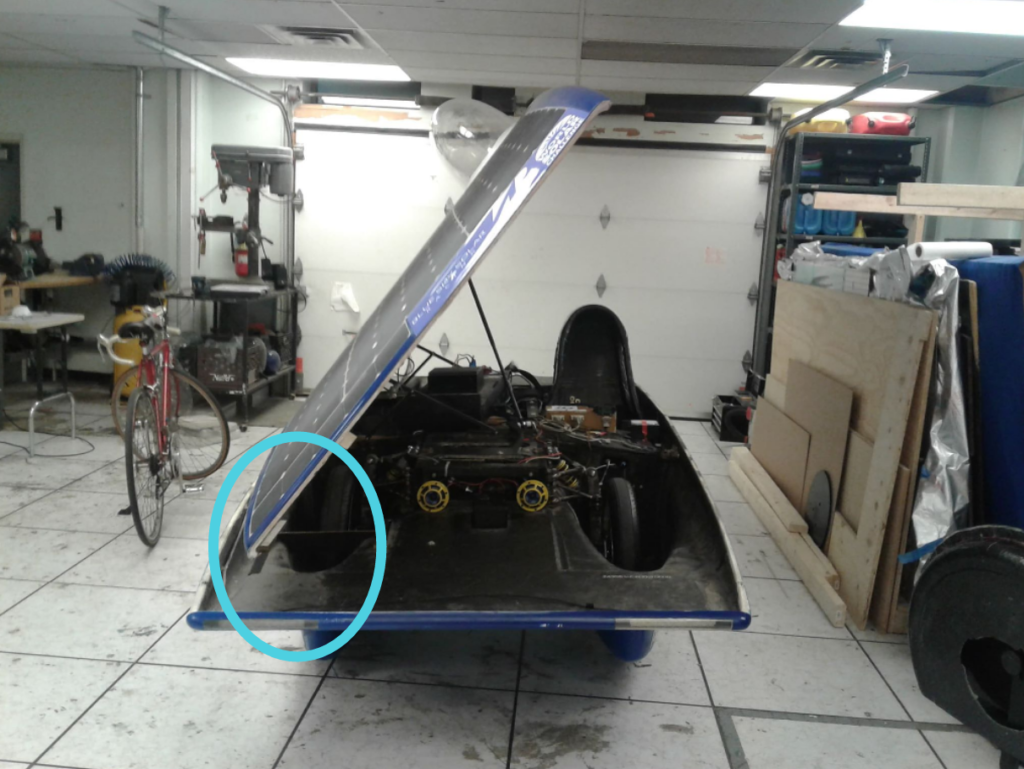

The existing design consisted of two hinge mechanisms and a sliding/turning pair locking mechanism. Show in Figure 3, the existing hinge is a five-bar mechanism that allows the roof (represented as link 3) to pivot up to ninety-degrees relative to the main body. It also employed an additional sixth link that slides horizontally against the body of the vehicle. Figure 4 shows the motion analyzed in MATLAB. The code can be found here.

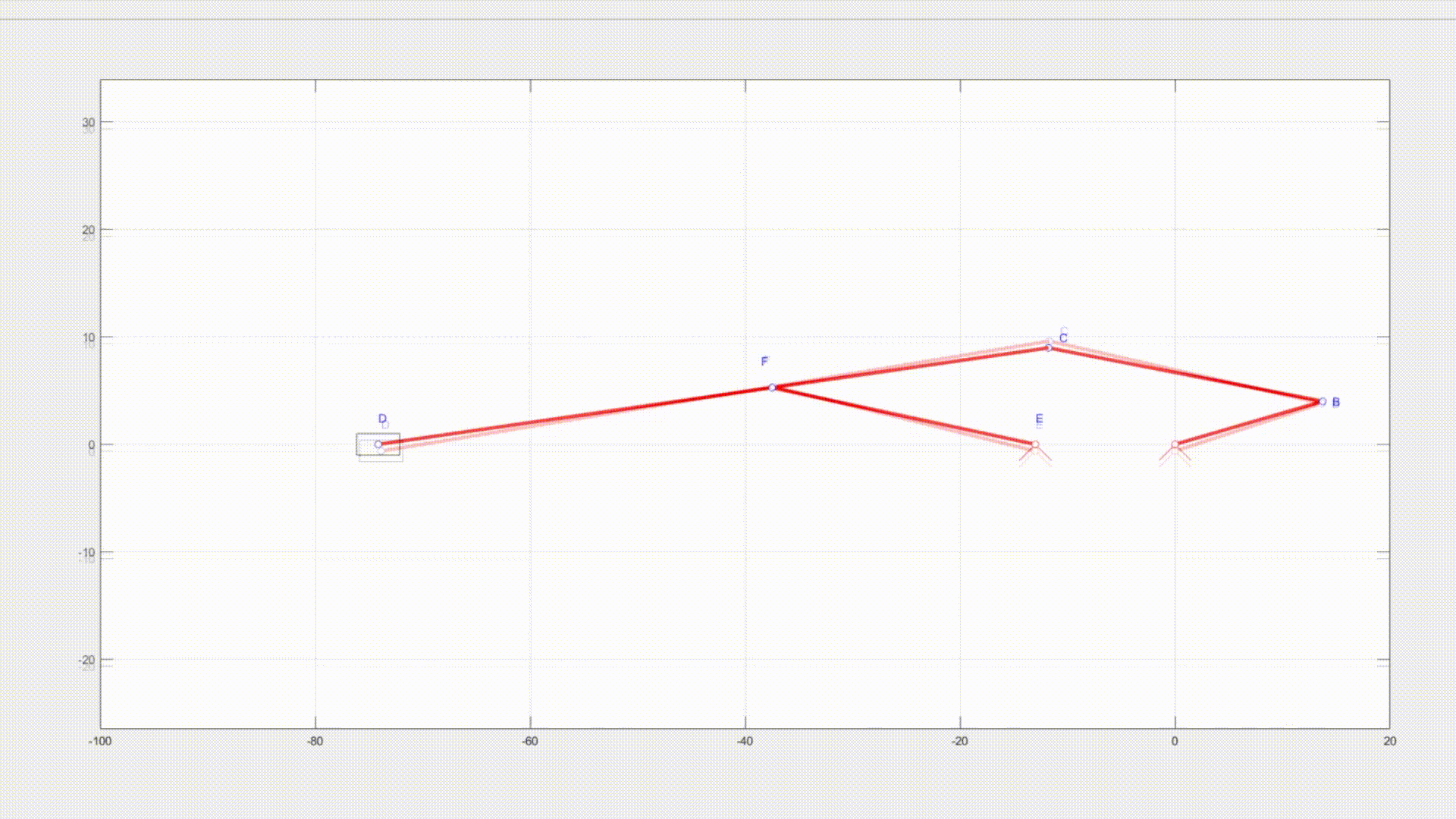
For the roof to pivot on the right-hand side of the vehicle (with respect to the drawing in Figure 3), a user had to apply a rocking input motion whist being outside of the vehicle to the end of link 3 (the roof) on the left-hand side. The two five-bar hinge mechanisms transmitted the manual input to link 6 which outputted a horizontal sliding motion. The torque required to open the roof with the existing hinge design was around 74 Nm.
The existing design did not allow the driver to adjust the angle of the roof while they were seated inside the vehicle. Moreover, the intrusion of the hinge and locking mechanisms to the inside of the vehicle did not allow for a non-obstructive access to various internal components.
Proposed Design
The team first proposed the roof to be cut in half crosswise to ensure the driver can embark/disembark the vehicle more easily and eliminate virtually all obstructions to the internal vehicular components. Next, the team proposed using four six-bar hinge mechanisms (one on each corner of the vehicle), a gear train, four dampers, a ratchet mechanism, a rack, and a crank. See Figures 5 and 6 for an overview of the proposed design.
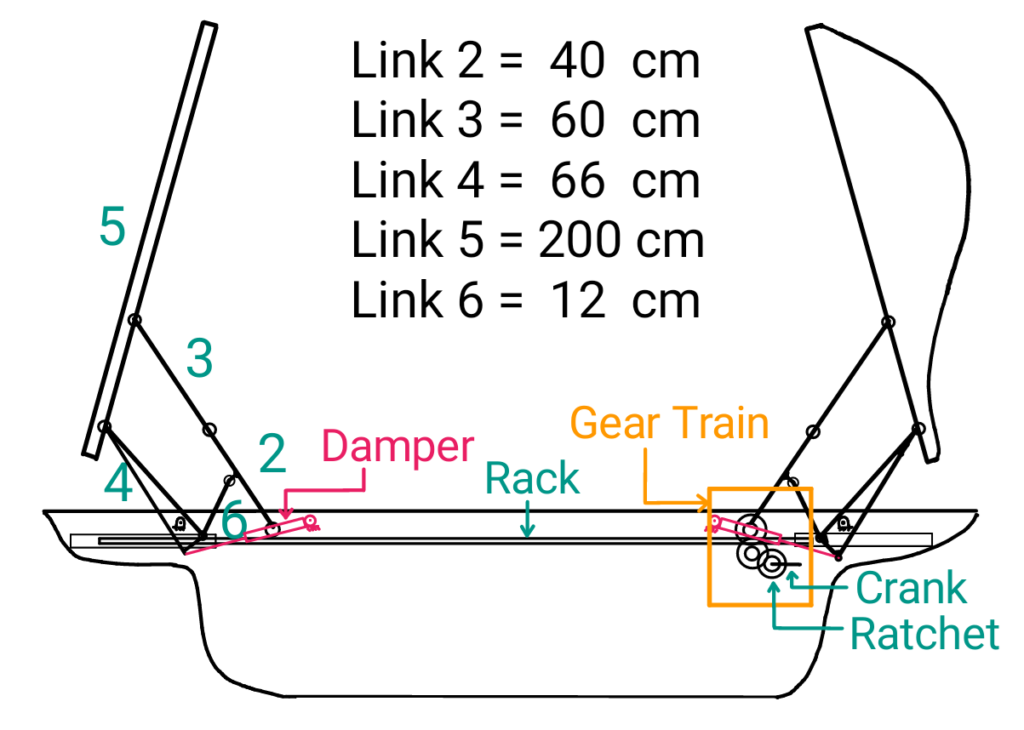
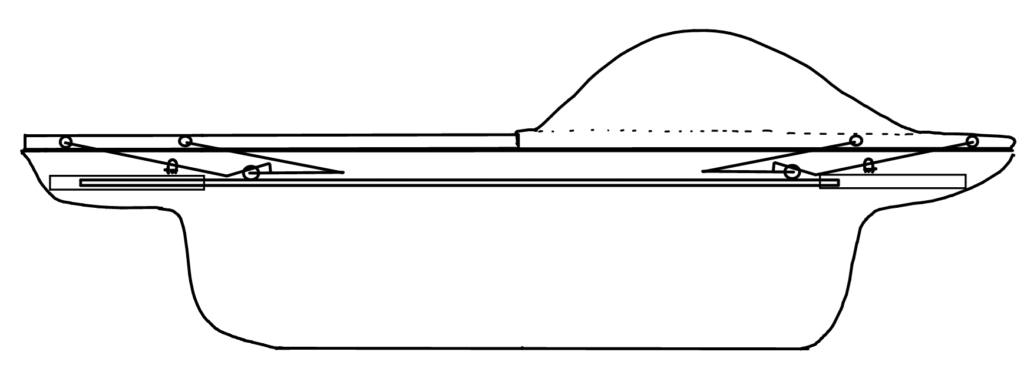
The six-bar hinge mechanism (shown in Figures 7 to 9) allows the roof (the long swinging arm) to pivot up to 72.9 degrees from the body.

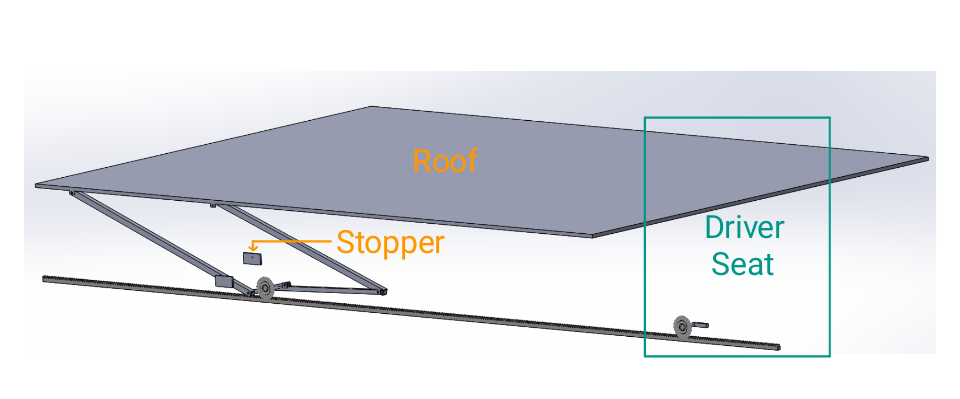
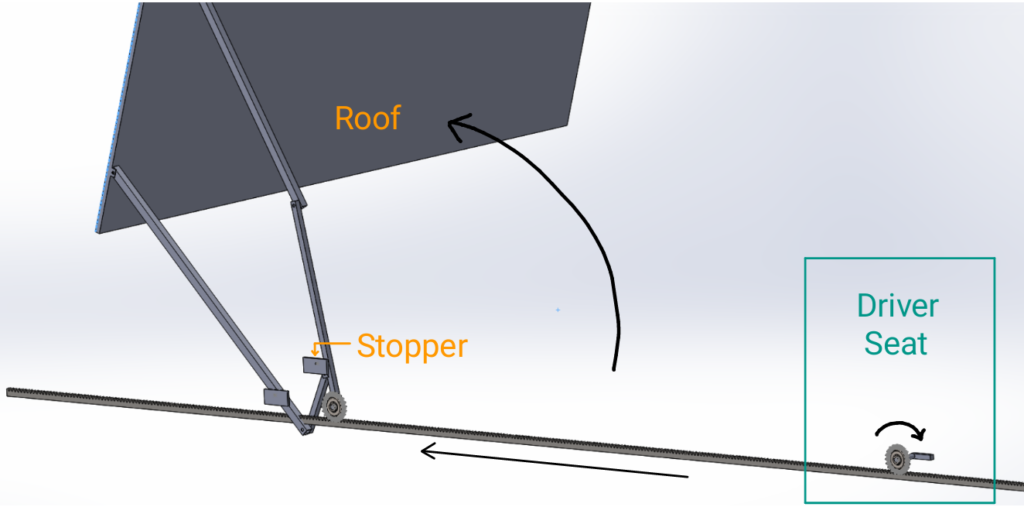
The ratchet mechanism allows continuous rotary motion in only one direction while preventing motion in the opposite side. When the driver rotates the crank, the pawl engages with the ratchet wheel, causing the entire mechanism to lock. This also allows the mechanism to half at specific intervals while opening the roof, enabling the user to set their desired roof angle. The user the presses the ratchet handle to release the pawl and close the roof. To avoid the roof from crashing onto main body when closing, dampers are connected to the hinge mechanism and the main body to soften the closing motion.
The gear train consists of five gears with different sizes and a partial gear which is one of the links in the six-bar hinge mechanism. Through series of gear reductions and a driver-operated hand crank, the required torque required to open the roof was calculated to be around 4 Nm, which is around a 94% reduction compared to the existing design.
The ratchet mechanism and gear train are shown in Figures 10 and 11.
